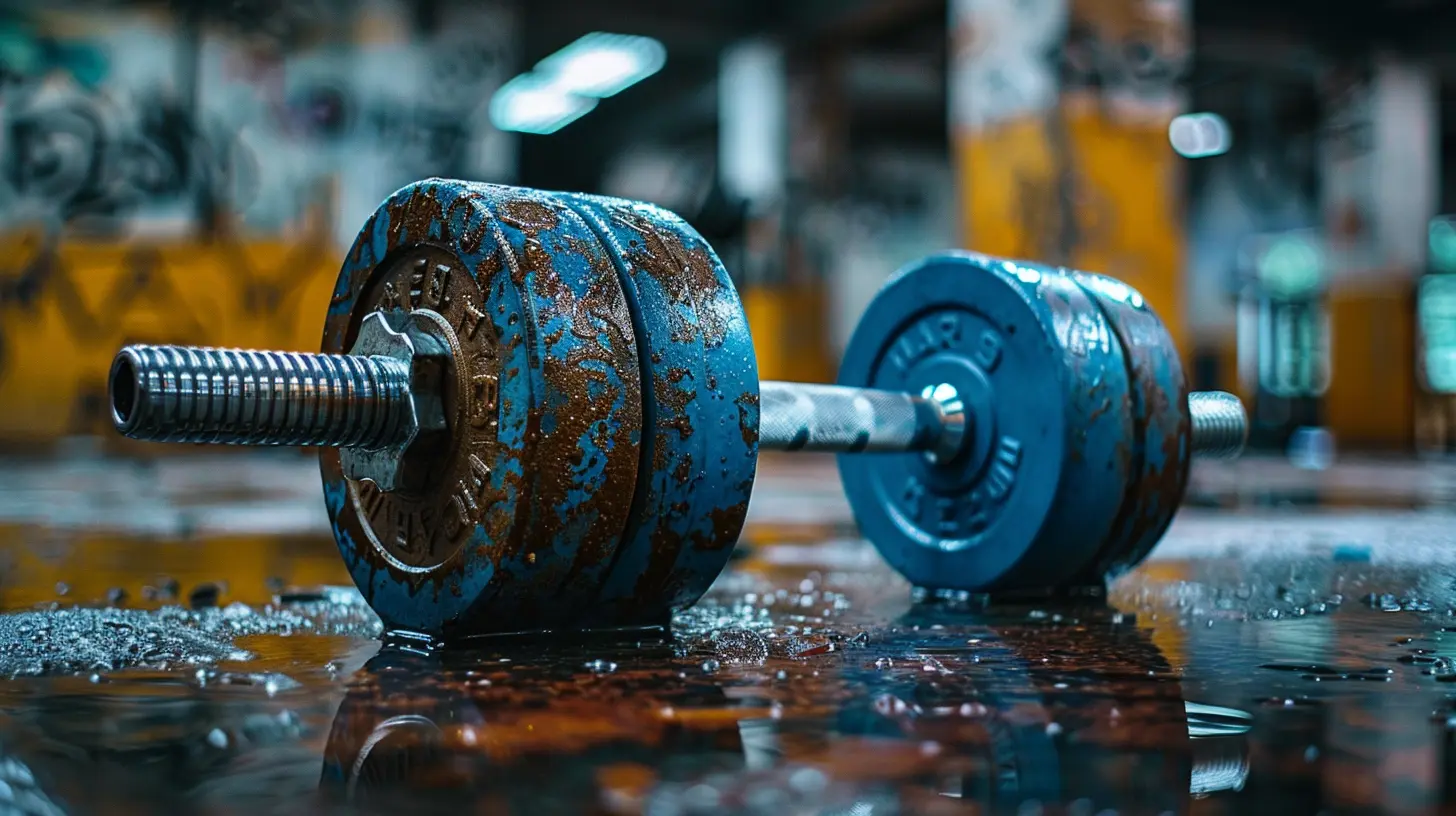Functional Training for Everyday Strength and Flexibility
12 January 2025
Have you ever found yourself struggling to lift a heavy grocery bag, or feeling stiff after sitting for too long? If you’re nodding your head, it might be time to rethink your workout routine. Enter functional training – a style of exercise that’s all about preparing your body for the movements of everyday life. Think squatting to pick up your toddler, twisting to reach something on a high shelf, or maintaining better posture during long work hours.
Unlike traditional workouts that often focus on isolated muscle groups, functional training works multiple muscles and joints at the same time. The result? Better strength, improved flexibility, and movements that feel smooth and natural. Let’s dive into why functional training is a game-changer and how you can incorporate it into your fitness journey.
What Is Functional Training?
First things first: what exactly is functional training? Picture this – instead of doing endless bicep curls, you’re practicing full-body movements that mimic real-life actions. Functional exercises involve movements like squats, lunges, pushes, pulls, twists, and bends. They’re designed to make you stronger, more flexible, and better equipped to handle the physical demands of daily life.Think of it this way: Your body isn’t designed to move in a straight line. Whether you’re walking, lifting, or twisting, your muscles work together as a team. Functional training embraces this natural teamwork by strengthening groups of muscles rather than isolating them.
Why Functional Training Is the Secret to Everyday Strength
1. It Builds Real-World Strength
Let’s face it; lifting a barbell at the gym is great, but how often are you doing that in day-to-day life? Functional training mirrors actions like carrying groceries, bending to tie your shoes, or even playing with your kids. By focusing on practical movement patterns, you strengthen the exact muscles you need for these activities. That means fewer aches and pains and more confidence in your physical abilities.2. It Enhances Flexibility and Range of Motion
Ever feel stiff just from sitting on the couch too long? That’s your body reminding you it's time to move! Functional training involves dynamic movements that stretch and lengthen muscles while strengthening them. This improves your flexibility and range of motion, so you can move more freely and prevent injuries.3. It Improves Balance and Stability
Life isn’t always steady – sometimes, you trip over a toy on the floor or lose your balance stepping off a curb. Functional exercises often target your core muscles and stabilizers (the unsung heroes of your body), making you more balanced and less prone to accidents.4. It’s a Time-Saver
Nobody wants to spend hours in the gym, right? The beauty of functional training is that it’s efficient. Since it engages multiple muscle groups all at once, you get more done in less time. It’s perfect for busy people trying to juggle a million responsibilities.
Key Moves for Functional Training
Ready to give functional training a shot? These exercises are a fantastic starting point. You don’t need fancy equipment – just some space and a bit of motivation!1. Squats
Squats are the MVP of functional training. They mimic the motion of getting up from a chair or picking something up from the floor. Plus, they strengthen your glutes, quads, and hamstrings.How to:
- Stand with your feet shoulder-width apart.
- Lower your hips as if you’re sitting back into a chair.
- Keep your chest up and your knees aligned with your toes.
- Push through your heels to return to standing.
2. Lunges
Lunges are great for building lower-body strength and improving balance, which comes in handy when climbing stairs or walking on uneven surfaces.How to:
- Step one foot forward into a lunge position.
- Lower your body until both knees form a 90-degree angle.
- Push off your front heel to return to standing.
- Repeat on the other side.
3. Push-Ups
Push-ups are a full-body workout disguised as an upper-body exercise. They’ll help you build strength in your chest, shoulders, arms, and core.How to:
- Start in a high plank position with your hands under your shoulders.
- Lower your chest to the floor while keeping your body in a straight line.
- Push back up to the starting position.
4. Planks
Planks are the ultimate core exercise. They’ll strengthen your abs, back, and shoulders, making everyday activities like bending or twisting less of a strain.How to:
- Hold your body in a straight line, supported by your forearms and toes.
- Keep your core engaged and avoid letting your hips sag.
- Hold the position for as long as you can.
5. Deadlifts
Deadlifts are fantastic for strengthening your posterior chain (that’s just a fancy term for your backside, including your hamstrings, glutes, and lower back). This is a great move for lifting heavier items off the ground.How to:
- Stand with feet hip-width apart and a slight bend in your knees.
- Hinge at the hips, lowering your torso and keeping your back straight.
- Return to standing by driving your hips forward.
How to Incorporate Functional Training into Your Routine
The best part about functional training? You don’t need to dedicate hours to it. Here’s how you can work it into your schedule:1. Start Small
If you’re new to exercise or just strapped for time, start with two or three functional workouts per week. Each session can be as short as 20–30 minutes.2. Combine Moves
Create a circuit by combining several functional exercises. For example, do 10 squats, 10 lunges, and a 30-second plank, then repeat the sequence three times.3. Use Everyday Objects
Who says you need fancy gym equipment? A heavy book can replace weights, and a sturdy chair can act as a bench. Get creative and use what you’ve got around the house.4. Focus on Form
Good form is your best friend. Take your time to learn each movement and ensure you’re doing it correctly. This will help you avoid injuries and get the most out of your workouts.The Long-Term Benefits of Functional Training
Functional training isn’t just a trend – it’s an investment in your future self. Over time, you’ll notice improvements in your posture, fewer random aches and pains, and increased energy throughout the day. You might even find that your other workouts (or hobbies, like hiking or yoga) feel easier.And here’s the cherry on top: Functional training can make you feel younger. That’s because it restores and maintains your body’s natural ability to move freely and easily, no matter your age.
Final Thoughts: Why Functional Training Works for Everyone
Functional training is like the Swiss Army knife of fitness – it’s practical, versatile, and works for everyone, no matter your fitness level. Whether you’re an athlete looking to enhance performance, a busy parent trying to juggle it all, or someone just starting on their fitness journey, functional training has something to offer.So, why not give it a go? Start small, stay consistent, and watch how your strength and flexibility improve in ways that truly matter in your everyday life. Trust me, your body will thank you!
all images in this post were generated using AI tools
Category:
FitnessAuthor:

Jackson Mahoney
Discussion
rate this article
13 comments
Maisie Collins
Functional training is essential for building everyday strength and flexibility. By integrating natural movements into your workouts, you enhance your body's performance in daily activities. Commit to this dynamic approach for improved mobility and resilience in all areas of life.
April 6, 2025 at 3:55 AM

Jackson Mahoney
Thank you for your insightful comment! I completely agree—functional training truly enhances our daily performance and promotes overall mobility and resilience.
Logan Summers
This article underscores the importance of functional training in daily life. I've found that incorporating these exercises not only enhances strength and flexibility but also makes everyday activities easier and more enjoyable. It's a practical approach to holistic health.
March 30, 2025 at 3:14 PM

Jackson Mahoney
Thank you for sharing your insights! I'm glad to hear that functional training has positively impacted your daily activities and overall well-being.
April McLoughlin
This article beautifully highlights the importance of functional training in our daily lives. I appreciate the practical tips and insights shared, as they inspire me to embrace strength and flexibility in a way that truly enhances my everyday activities.
February 10, 2025 at 4:28 PM

Jackson Mahoney
Thank you for your kind words! I'm glad you found the tips helpful and inspiring. Embracing functional training can truly transform our daily activities!
Damon McCool
Empower your daily life with functional fitness.
February 1, 2025 at 5:15 PM

Jackson Mahoney
Absolutely! Functional fitness enhances daily life by improving strength and flexibility, making everyday activities easier and more efficient.
Vireo Cook
Because lifting groceries isn’t enough!
January 27, 2025 at 5:47 PM

Jackson Mahoney
Absolutely! Everyday tasks like lifting groceries highlight the importance of functional training to enhance our overall strength and flexibility.
Zaren McWhorter
Forget superhero capes; with functional training, you’ll be your own everyday strength and flexibility hero!
January 21, 2025 at 3:18 PM

Jackson Mahoney
Absolutely! Functional training empowers you to tackle daily challenges with ease and confidence. Be your own hero!
Kova Vasquez
This article effectively highlights the benefits of functional training for enhancing everyday strength and flexibility. By emphasizing movements that mimic daily activities, it showcases how this approach can improve overall fitness and prevent injuries. Integrating functional exercises into regular routines is a practical strategy for achieving long-term health and wellness.
January 17, 2025 at 3:53 PM

Jackson Mahoney
Thank you for your insightful comment! I'm glad you found the article highlights valuable for promoting functional training's role in enhancing everyday health and wellness.
Fenn Coffey
Great article! Emphasizing functional training for everyday strength and flexibility is so important for overall health. Incorporating these exercises into our routines can truly enhance daily activities and improve quality of life. Keep up the fantastic work in promoting healthy habits and empowering others on their fitness journey!
January 17, 2025 at 5:23 AM

Jackson Mahoney
Thank you for your kind words! I'm glad you found the article valuable. Promoting functional training is essential for enhancing everyday life and overall health. Keep moving!
Lisette McCray
In movement’s dance, strength unfolds, Flexibility weaves a tale untold. Functional training, life’s embrace, Empowers us, a vibrant pace. Everyday warriors, we find our grace.
January 15, 2025 at 4:28 PM

Jackson Mahoney
Thank you for capturing the essence of functional training so beautifully! Your words perfectly reflect its empowering nature and its role in enhancing our daily lives.
Tobias Strickland
Great insights on functional training! It’s inspiring to see how it enhances everyday strength and flexibility. Thank you for sharing!
January 15, 2025 at 4:40 AM

Jackson Mahoney
Thank you for your kind words! I'm glad you found the insights helpful. Here's to enhancing our everyday strength and flexibility!
Odessa Webster
Embrace the power of functional training! It's not just about strength; it's about enhancing your everyday life. Every movement you master today builds a more flexible, resilient you for tomorrow. Let's get moving and thrive together!
January 14, 2025 at 5:45 AM

Jackson Mahoney
Thank you for highlighting the holistic benefits of functional training! It truly empowers us to enhance our daily lives and build resilience. Let's keep moving forward together!
Pia Kirkland
Train smart, live stronger daily!
January 13, 2025 at 6:01 PM

Jackson Mahoney
Absolutely! Functional training is key to enhancing daily strength and flexibility. Let's empower ourselves every day!
Preston McVeigh
Unlock your potential: strength and flexibility for life!
January 13, 2025 at 3:51 AM

Jackson Mahoney
Thank you! Emphasizing strength and flexibility through functional training truly transforms daily life.
MORE POSTS

Synergizing Traditional and Functional Medicine for Comprehensive Care

Finding Balance: The Art of Healthy Work-Life Integration

Exploring the Benefits of Fermented Foods for Gut Health

How Functional Medicine Addresses Anxiety and Depression

Lesser-Known Symptoms of Ovarian Cancer Every Woman Should Know

Plant-Based Breakfast Ideas That Will Keep You Full Until Lunch

Functional Medicine Insights into Managing Sleep Disorders

The Differences Between Good and Bad Estrogen

How to Tell if Your Gut is Unbalanced (And What You Can Do)